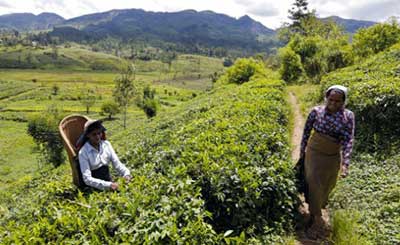Relevance: GS-3: Agriculture.
Key Phrases: Triple Bottom line Approach; important factors in sustainable businesses and the development paradigm; a niche and an emerging market segment; Eco-friendly tourism experience; address the ‘hollowing out’ effect of rural decline; Land consolidation through cluster-based farming or One District One Crop services;
Context
- The Triple Bottomline Approach of Planet, People, and Profit
seems to be one of the best approaches in sustainable businesses and
the development paradigm.
- Proper policy attention and implementation toward Agri-tourism fulfil these criteria.
Key Highlights
Present Scenario
- Agri-tourism is a niche and an emerging market segment of the tourism
industry.
- The global market was valued at $42.46 Bn (2019 )
- It is expected to reach $62.98 Bn by 2027 (CAGR of 13.4% 2020-2027).
What is Agri-tourism and what is its status in India?
- Agri-tourism is a non-urban hospitality product.
- It serves an agrarian lifestyle, culture, and heritage with abundant natural resources.
- As per the 2019 Business Economics report, revenue from agri-tourism is growing at an annual growth rate of 20% in India.
Why agri-tourism & What can it offer to farmers?
- Rising demand for natural and rural destinations as tourist attractions
- This is due to rapid climate change, tourism induced pollution levels and GHG emissions.
- Eco-friendly tourism experiences such as agri-tourism can help meet such demands.
- Addressing challenges of agriculture
- India’s agriculture has been under stress due to
- increased input costs,
- volatile returns,
- climatic adversaries,
- land fragmentation, and so on.
- As per World Bank’s 2021 report: Despite agriculture being a mainstay of the economy, farmers have shifted to other industries for alternative livelihoods and income diversification.
- Agri-tourism can address the ‘hollowing out’ effect of rural decline and restore farmers’ confidence in agriculture and ecosystem-based services.
- It provides income-generating activity for farmers and strengthens the economic, cultural and ecological resilience of rural regions.
- India’s agriculture has been under stress due to
- Fulfils triple bottom line approach
- Agri-tourism serves a dual purpose of
- supporting the incomes of farmers (People and Profit) and
- creating novel tourism forms for tourists (Planet and Profit)
- Since it addresses People, Profit and Planet, it contributes to economic, social, and environmental dimensions of sustainability.
- Agri-tourism serves a dual purpose of
- Brings a positive attitudinal change toward farming
- Agri-tourism acts as both a promoter and inhibitor to changing
farmers’ attitudes toward farming.
- Promoter - Use the land which would have been left fallow.
- Inhibitor- Prevents farmers to cultivate, and instead uses the portion of land for tourism activities.
- Once this becomes a lucrative income, it will help to reduce disguised unemployment in agriculture
- Agri-tourism brings value propositions to various business segments.
- Agri-tourism acts as both a promoter and inhibitor to changing
farmers’ attitudes toward farming.
Characteristics of Agri-tourism
- Its market is split into
- activity,
- sales channel,
- and region/spaces
Activity Segment
- This categorises this market into
- on-farm sales,
- outdoor recreation,
- agritainment
- educational tourism, and so on
- Based on activity, the on-farm sales segment accounted for a 57.9% share of the pie.
Sales Channel segment
- This segment bifurcates into
- travel agents and
- direct
- The travel agent segment held a 67.5% share.
- Physical evidence, people and process as essential determinants of service marketing can affect agri-tourism sales destinations.
Region-wise segments
- This includes
- North America,
- Europe, and
- Asia-Pacific including India, Latin America, the Middle East, and
- Africa.
- The North American region held a 38.7% share in 2019.
Policy attention needed
- Greater policy attention in developing countries is a must, especially
in countries where the populace is either directly or indirectly dependent
on agriculture.
- To address perpetual adversities like
- uncertain cash flow,
- recurring debt trap and
- unpredictable climate,
- agri-tourism can be promoted as an important alternative.21`
- To address perpetual adversities like
- The survey indicates that tourists prefer to visit agri-tourism centres
with a larger area and multiple fun and recreational activities. This
contrasts with the very purpose of agri-tourism which is to support small
and marginal farmers.
- Land consolidation through cluster-based farming or One District One Crop services can be helpful in this regard.
- Social/ impact investors can mobilise private equities into agri-tourism based on the stage of the business and the business model adopted by Agri-preneurs.
- The Agri Tourism Development Corporation can attract start-ups and impact investors to harness the business potential of the agri-tourism landscape in India.
Conclusion
- An enabling environment is required for agri-tourism to thrive and have a 15-20% share in the tourism industry. The Union Budget 2023-24 can increase allocations for such green ventures.
Source: The Hindu BL
Mains Question:
Q. What is Agri-tourism? What are its benefits from the perspective of Indian Farmers? What steps can be taken to popularise it?








